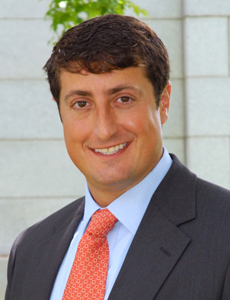Vermont Report: Health Care Captives
Managing Change

Doctors rely on data from tests and diagnostics to help diagnose patients, so it’s apropos to use data to ascertain the health of captives that underwrite exposures for physicians, hospital systems and others in the health care industry.
In Vermont in 2013, health care was tied with insurance as the industry with the most captive formations. Eight new captives became active in health care and insurance each, out of a total of 29 new captives. That brought the total number of active health care captives at year end to 94, making the sector No. 2 in the domicile. It is closing in on manufacturing with its 101 active captives.
“Health care is clearly a growth sector for the captive industry and certainly our fastest growing sector in Vermont.” — Dan Towle, director of financial services, Vermont Agency of Commerce & Community Development
“Health care is clearly a growth sector for the captive industry and certainly our fastest growing sector in Vermont,” said Dan Towle, director of financial services in Vermont’s Agency of Commerce & Community Development. “I anticipate it will become our largest sector in a matter of a few years.”
Keep in mind, historically, that when captive activity reaches a feverish pitch, it usually is a sign that health care is in the middle of a crisis. Is that the case now, as the health care industry continues along a path of uncertain reform in the United States?
A History of Crisis
Captives and health care have always seemed to go together like doctors and white coats. The history goes back to the late 1970s when the first hospital professional liability captive was formed offshore. By the 1990s, smaller hospital systems learned to value the control and security of captive insurance for such exotic exposures as Medicare reimbursement trusts. Then, captives proved their value again during the most recent, and perhaps most traumatic, crisis of the traditional insurance market, when in the early 2000s, the medical professional liability market convulsed from unsustainable claims trends. Rates jumped. Capacity went into shock.
The largest underwriter of the line, St. Paul, left the market altogether, bringing seizures that rippled across multiple states. Private physicians were particularly hard hit.
Tim Padovese, president and CEO of Ophthalmic Mutual Insurance Co. (OMIC), a risk retention group, recalled the moment when 80,000 physicians had to find a new home for coverage.
“That put a huge strain on the market to absorb that business from both capital constraints and staffing expertise,” he said.
OMIC formed in 1987 when about 400 ophthalmologists received notice of cancellation on their med-mal insurance policies. These physicians approached the American Academy of Ophthalmology and asked it to create an insurance program.
“That put a huge strain on the market to absorb that business from both capital constraints and staffing expertise.” — Tim Padovese, president and CEO, Ophthalmic Mutual Insurance Co.
In the 2000s, physicians often turned to nearby hospital systems — and their captives — for new coverage. Some hospital captives responded by providing an antidote to the crisis: third-party coverages to private physicians. That was when some offshore domiciles grew their reputations as purported health care domiciles because of their willingness to accommodate these third-party arrangements.
To be fair, Vermont came to the rescue too. David F. Provost was just beginning his tenure with the Captive Insurance Division of the Vermont Department of Financial Regulation in 2001, but he looks back on that time now, as Vermont’s deputy commissioner. When traditional medical-malpractice insurers went bankrupt or left states en masse, followed by physicians, whether in Pennsylvania or in New England, Vermont filled the need, particularly for risk retention groups (RRGs), he said.
“Not only did we fill a huge gap in the market by getting the RRGs up and running quickly; in the long haul, it’s led to reduced losses,” Provost said.
With its steady and fair regulation, Vermont built its reputation as a place health care organizations could go to form captives and/or expand existing ones toward third-party business — with a focus on risk management and patient care. Such “gold standard” captives get doctors to focus on avoiding losses in the first place as well as having appropriate insurance coverage.
“It winds up as a tool to provide better medical care,” said Provost of the RRGs.
As Vermont’s 2013 formation numbers show, health care organizations are again looking for flexible, respectful and respected regulation — and they are looking to Vermont for it.
“Some would lead you to believe you need to go offshore for your hospital or doctors group captive, and that is clearly not the case. Hospital captives continue to thrive onshore and in Vermont,” said Towle.
Given the issues now confronting health care, they will need somewhere to thrive.
As captive attorney Tom Jones of McDermott Will & Emery LLP said, the implementation of the Affordable Care Act (ACA) is “starting to bite now.”
One visible effect is the now-collective wisdom that bigger will be better among health care organizations when it comes to surviving shrinking reimbursement under the ACA. Consolidation was trending before the 2010 health care reform bill, but it’s been accelerated by its incentives, particularly with the formation of accountable care organizations (ACOs). ACOs are integrated networks of doctors, hospitals, nursing homes and other providers that share responsibility for the care of a group of Medicare patients. The goals are to promote accountability, efficiencies and better clinical outcomes.
“The current perception is bigger equates to survivability,” Jones said, explaining that health care systems are seeking mergers or ACO affiliations to improve care but also to gain efficiencies on the back end — insurance, billing, financing and more.
What will “bigger” equate to for captives? More risk as bigger exposures mount from bigger organizations and as formerly private physicians now become full-time employees of hospitals? Fewer captives as new systems built out of M&As shut down legacy captives? It could be both. OMIC’s Padovese has heard from other med-mal writers out there that some captives have lost insured physicians to ACOs, while others have added physicians to their captives.
For Padovese, another of the ACA’s effects to watch is the impact of millions of newly insured Americans.
“One of our concerns is as more people sign up for government health care and join the ranks of insureds, their access to our physicians could cause an increased workload that could potentially affect care,” Padovese said.
If emerging symptoms seem confusing and contradictory, it’s because it’s really too early in the arc of reform for clarity.
“If this were a football game, this would be the end of the first quarter — maybe the middle of the first quarter,” Chicago-based Jones said. Organizations are still “bumping into the walls” figuring out what’s next, he added.
Some health systems, like the Mayo Clinic or Geisinger Health System, have already integrated well. They have deep experience with electronic medical records and using data for better treatment and prevention, uniting teams of doctors to treat one patient.
“Both are adamant captive owners. They want to own the risk because they feel confident they can best mitigate the risk.” — Tom Jones, attorney, McDermott Will & Emery LLP
“Both are adamant captive owners,” Jones said. “They want to own the risk because they feel confident they can best mitigate the risk.”
And when organizations own their existing risk through captives, there’s a good chance that they’ll find ways to innovate to address unexpected exposures arising out of systemic health reform too.
Patient Utilization A Key Risk
One new exposure health care risk organizations may consider managing through captives is patient utilization risk. Under the ACA, the U.S. government pays an ACO a certain amount of money to provide care, potentially unlimited, for a given population.
If a hospital system is really efficient and its given population isn’t too sick, money can be made in the new business model. If not, the ACO members could take a hit to their bottom line.
ACO groups, however, could hedge this financial risk with their captives, which would act as a “shock absorber” smoothing results between good and bad years. Large dollar investments notwithstanding, some firms are in the early stages of exploring this approach, Jones reported.
Robert H. “Skip” Myers Jr., partner in the insurance group of Morris, Manning & Martin LLP, also foresees other kinds of liability emerging from ACO and other affiliation arrangements, such as electronic data keeping or cyber liability, given the focus on technology in health care reform.
At least one health care organization has employed a captive for another ACA-impacted exposure: employee health benefits. The Community Hospital of the Monterey Peninsula formed its Central Coast Community Mutual Insurance Co. in 2011 to serve as a group stop-loss captive, helping it and other employers to transfer the excess health risk of their employee populations.
CFO and Vice President Laura Zehm admitted that 2012 was a rough year to convince other employers to join, given the uncertainty surrounding health care reform.
“Most employers were sitting tight,” she said.
But now with the Covered California insurance exchange in full swing, the group captive may take off. Zehm shared anecdotes to explain — one employer she knows is experiencing 47 percent premium increases on their traditional insurance, because carriers are feeling the brunt of adverse selection in the exchange. The group captive is now in talks with 10 interested California employers.
The Community Hospital of the Monterey Peninsula also runs an insurance plan, a fully insured, California-licensed Medicare Advantage Plan in Monterey County. As a member of Health Plan Alliance — a national association of roughly 50 U.S. health care systems with such plans — Zehm knows it is a growing trend, representing another new exposure: enterprise population management risk.
The Community Hospital of the Monterey Peninsula partners with a physician group to run the Medicare plan, so consider it an ACO for all intents and purposes, with the same priority: manage the health of its population.
Health care reform “lit a fire under us,” said Zehm, essentially forcing the organization to realize it needed to change how it did business.
The hospital moved away from pay for service for sick patients and toward integrated care to keep patients healthy. Liability risk could erupt, however, if its health plan were to fail to keep someone healthy.
Would a captive be useful to help the Community Hospital of the Monterey Peninsula and its partners transfer this risk?
Yes, maybe down the road.











